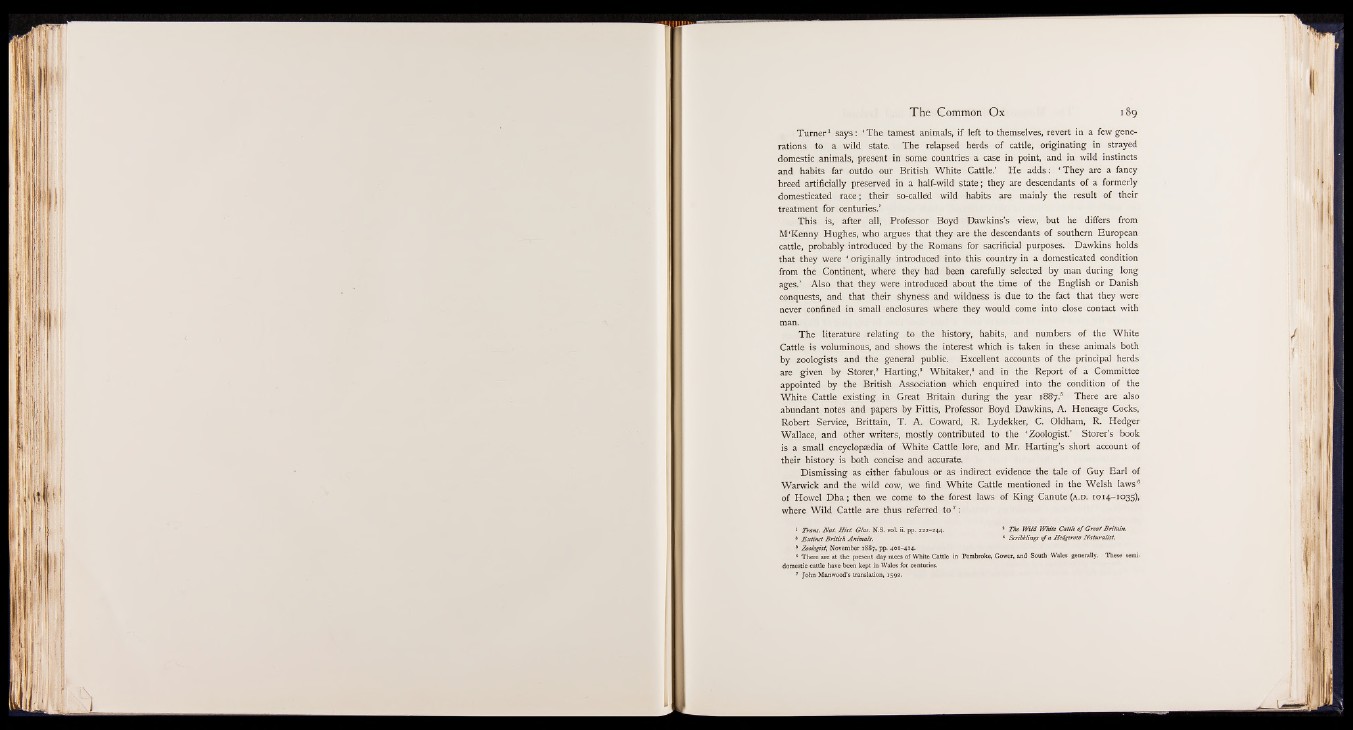
Turner1 says: ‘ The tamest animals, if left to themselves, revert in a few generations
to a wild state. The relapsed herds of cattle, originating in strayed
domestic animals, present in some countries a case in point, and in wild instincts
and habits far outdo our British White Cattle.’ He adds: ‘ They are a fancy
breed artificially preserved in a half-wild state; they are descendants of a formerly
domesticated race; their so-called wild habits are mainly the result of their
treatment for centuries.’
This is, after all, Professor Boyd Dawkins’s view, but he differs from
M‘Kenny Hughes, who argues that they are the descendants of southern European
cattle, probably introduced by the Romans for sacrificial purposes. Dawkins holds
that they were ‘ originally introduced into this country in a domesticated condition
from the Continent, where they had been carefully selected by man during long
ages.’ Also that they were introduced about the .time of the English or Danish
conquests, and that their shyness and wildness is due to the fact that they were
never confined in small enclosures where they would come into close contact with
man.
The literature relating to the history, habits, and numbers of the White
Cattle is voluminous, and shows the interest which is taken in these animals both
by zoologists and the general public. Excellent accounts of the principal herds
are given by Storer,2 Harting,3 Whitaker,4 and in the Report of a Committee
appointed by the British Association which enquired into the condition of the
White Cattle existing in Great Britain during the year 1887.6 There are also
abundant notes and papers by Fittis, Professor Boyd Dawkins, A. Heneage Cocks,
Robert Service, Brittain, T. A. Coward, R. Lydekker, C. Oldham, R. Hedger
Wallace, and other writers, mostly contributed to the ‘ Zoologist.’ Storer’s book
is a small encyclopaedia of White Cattle lore, and Mr. Harting’s short account of
their history is both concise and accurate.
Dismissing as either fabulous or as indirect evidence the tale of Guy Earl of
Warwick and the wild cow, we find White Cattle mentioned in the Welsh laws6
of Howel D h a ; then we come to the forest laws of King Canute (a .d . 1014-1035),
where Wild Cattle are thus referred to 7:
1 Trans. Nat. H ist. G/as. N.S. vol. ii. pp. 222-244. a The Wild White Cattle o f Great Britain.
* E xtinct B ritish Animals. * Scribblings o f a Hedgerow Naturalist.
* Zoologist, November 1887, pp. 401-414.
6 There are at the present day races of White Cattle in Pembroke, Gower, and South Wales generally. These semidomestic
cattle have been kept in Wales for centuries.
7 John Manwood’s translation, 1592.